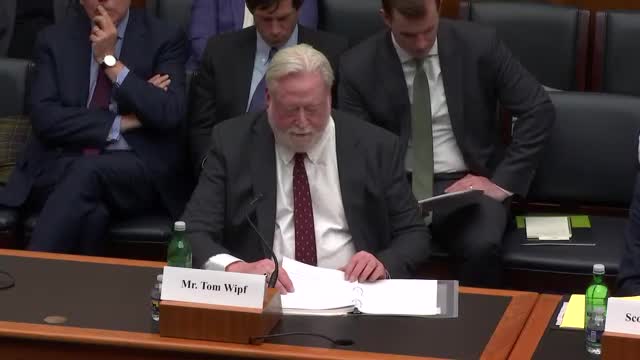Panel: Treasury Market Functioning Tied to Fed Balance Sheet, Dealer Capacity and Investor Mix
April 09, 2025 | Financial Services: House Committee, Standing Committees - House & Senate, Congressional Hearings Compilation
This article was created by AI summarizing key points discussed. AI makes mistakes, so for full details and context, please refer to the video of the full meeting. Please report any errors so we can fix them. Report an error »

Speakers described four related pressures on Treasury market functioning: a sharp increase in outstanding Treasury debt, reduced dealer intermediation capacity, shifts in investor composition toward more leveraged and price‑sensitive holders, and the Federal Reserve's large holdings of Treasuries.
Tom Whiff said Treasury issuance has more than doubled over the past decade and noted the Fed currently holds "more than $4,000,000,000,000 of treasuries on its balance sheet," making it the single largest holder of Treasury debt. He and others said the composition of holdings matters because some investors (hedge funds, asset managers) use leverage and derivatives that can amplify stress during rapid price moves.
Dr. Kristin Forbes highlighted four developments: larger issuance and a greater share of short‑term bills that require frequent rollover, constrained broker‑dealer intermediation capacity, changing purchaser mix with more leveraged funds and fewer foreign official holders, and geopolitical shifts that could lower demand for dollars and Treasuries over time. She warned that these trends make the market more vulnerable to shocks and that the Fed may be forced to intervene in ways that could conflict with monetary policy goals.
Former Undersecretary Neli Lang and Dr. Forbes both said regulatory changes should be coordinated: central clearing, SLR adjustments for reserves and careful management of open‑end bond fund liquidity and hedge fund leverage were all recommended to reduce the risk of fire‑sale dynamics.
Ending: The panel urged a package of reforms (improved market data and surveillance, central clearing where feasible, calibrated capital/margin treatment, and liquidity safeguards for open‑end funds) to strengthen Treasury market resilience rather than relying on any single measure.
Tom Whiff said Treasury issuance has more than doubled over the past decade and noted the Fed currently holds "more than $4,000,000,000,000 of treasuries on its balance sheet," making it the single largest holder of Treasury debt. He and others said the composition of holdings matters because some investors (hedge funds, asset managers) use leverage and derivatives that can amplify stress during rapid price moves.
Dr. Kristin Forbes highlighted four developments: larger issuance and a greater share of short‑term bills that require frequent rollover, constrained broker‑dealer intermediation capacity, changing purchaser mix with more leveraged funds and fewer foreign official holders, and geopolitical shifts that could lower demand for dollars and Treasuries over time. She warned that these trends make the market more vulnerable to shocks and that the Fed may be forced to intervene in ways that could conflict with monetary policy goals.
Former Undersecretary Neli Lang and Dr. Forbes both said regulatory changes should be coordinated: central clearing, SLR adjustments for reserves and careful management of open‑end bond fund liquidity and hedge fund leverage were all recommended to reduce the risk of fire‑sale dynamics.
Ending: The panel urged a package of reforms (improved market data and surveillance, central clearing where feasible, calibrated capital/margin treatment, and liquidity safeguards for open‑end funds) to strengthen Treasury market resilience rather than relying on any single measure.
View full meeting
This article is based on a recent meeting—watch the full video and explore the complete transcript for deeper insights into the discussion.
View full meeting